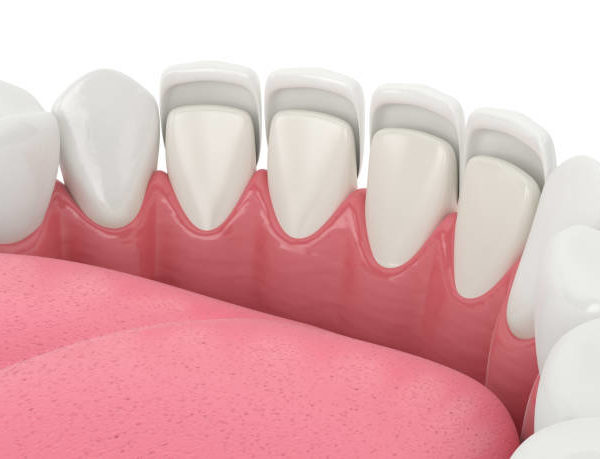With the aesthetic zone being absolutely critical to a patient’s external appearance and inner emotions, orchestrating a bioesthetic result is mandatory. Too often, this is complicated when aesthetic desires infringe on the health of the periodontal complex. This is often true when biologic width violations have occurred iatrogenically.
Many factors may contribute to these failures, the two main culprits being intracrevicular margin location and over contoured restorations. Not only is plaque accumulation problematic, but the supracrestal fibers also become interrupted, causing the tissues to become further inflamed and aesthetically unmanageable. Kois’ landmark study defined the total dentogingival complex (DGC) as clinically predictable at 3.0 mm on the direct facial aspect, and at 3.0-5.0 mm interproximally when measured from the free gingival margin to the osseous crest. It is critical anteriorally that the gingival margin mimics the osseous scallop while maintaining the DGC.1 Further complicating these complex situations is the degree of inflammation in the soft tissue, affecting the clinical development of health and aesthetic symmetry.
Dental lasers have evolved considerably as an adjunctive and alternative treatment to safely, conservatively, and reliably decrease bacterial levels and improve the hard and soft tissue contours.
Often the patient is frustrated with his or her previous poor cosmetic results, but to improve the periodontal framework in order to create an ideal result, they must be referred to yet another doctor. Even more challenging is the extended healing time created by reflective mucoperiosteal surgery. This not only affects the chronology of final restorative care, but also delays the patient’s ultimate satisfaction and happiness for a minimum of two to three months. Fortunately, dental lasers have evolved considerably as an adjunctive and alternative treatment to safely, conservatively, and reliably decrease bacterial levels and improve the hard and soft tissue contours.
Studies of Er: YSGG lasers by Rizoiu and others have shown that thermal coagulative results, as well as bony ablation characteristics are similar to a dental bur. From a patient-friendly standpoint, less need for suturing and shorter healing times improves case acceptance for doing ideal dentistry. In selected cases, such as the one presented in this article, minimally invasive laser procedures, with precise restorative planning and technique, can satisfy aesthetic and functional parameters. Furthermore, patients can enjoy optimal results more comfortably and efficiently.
A conservative strategy was devised that would allow us to correct the problems and causes in a “multitasking” manner.




